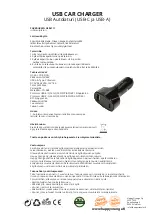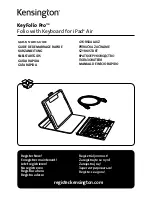
SEALED ENERGY SYSTEMS
®
9
User Manual
3.1.6. Storage
Storage Temperature Limits:
-20°C to 60°C,
≤
80%RH
The battery should be stored in an environment with low
humidity, free from corrosive gas at a recommended
temperature range <21°C. Extended exposure to temperatures
above 45°C could degrade battery performance and life.
3.1.7. Terminal Specifications
See Mechanical Drawing for orientation of contacts J1-1,5
TERMINAL LEGEND DESCRIPTION
1
(+)
Positive side of battery
2
(C)
SMBus Clock. Internally a 1M
Ω
resistor is
connected between (C) and (-)
3
(D)
SMBus Data. Internally a 1M
Ω
resistor is
connected between (D) and (-)
4
(T)
300
Ω
± 5% resistor connected between
(T) and (-)
5
(-)
Negative side of battery
A key slot is also present on each pack for mechanical alignment
adjacent to the positive terminal. The SMBus Clock and data lines
require separate pull-ups to system logic voltage, NOT the
battery voltage. Typically, a 15K
Ω
pull-up resistor is used,
but please refer to the SMBus Specification for additional info.
3.2
Fuel-Gauge Electronics
3.2.1. Overview of Operation
The battery is capable of communicating with host or the
charger through the System Management Bus (SMBus). The
battery is fully SMBus and SBDS Revision 1.1 compliant. An
8-
bit Reduced Instruction Set CPU (RISC) is used to process the
core algorithms and perform operations required for battery
monitoring. Charge and discharge current, cell and pack
voltages, and pack temperature are all measured using an
integrated analog to digital converter at 14-bit to 16-bit
effective resolution.
The battery pack uses a system level approach to optimize the
performance of the battery. It’s primary functions are to provide
fuel gauging and software based charge control, and to ensure
safe operation throughout the life cycle of the battery.










































